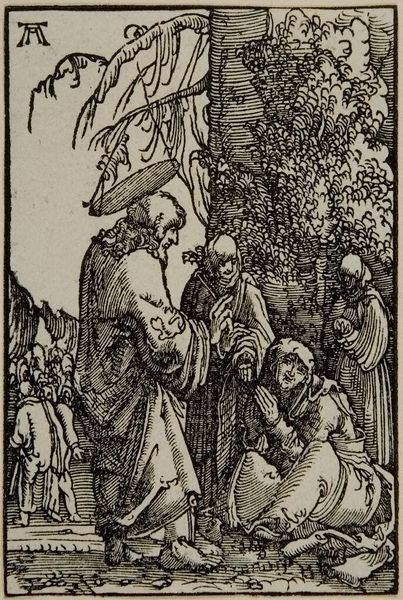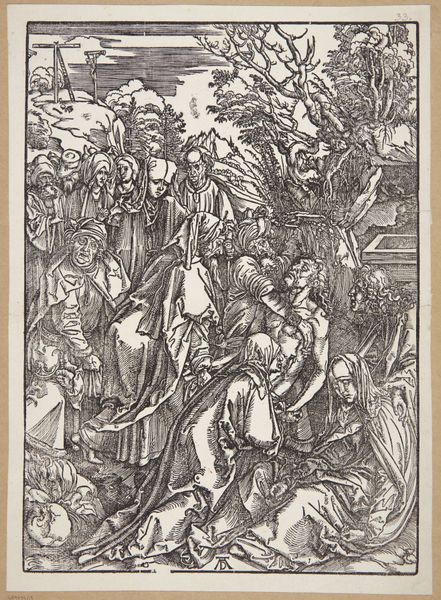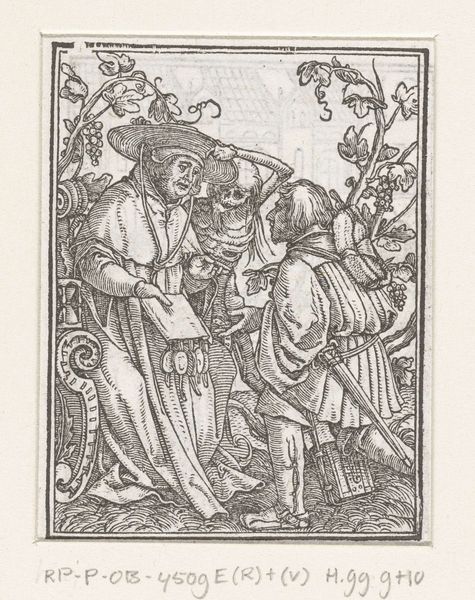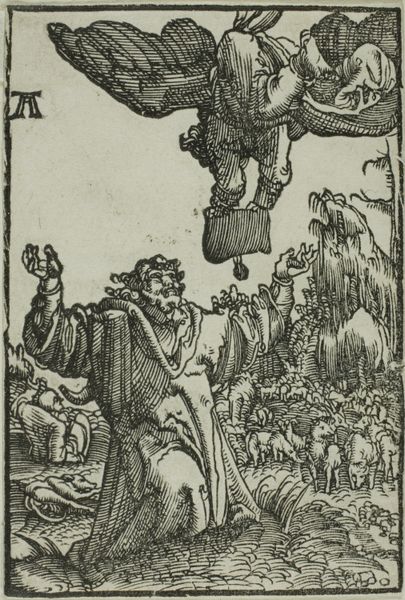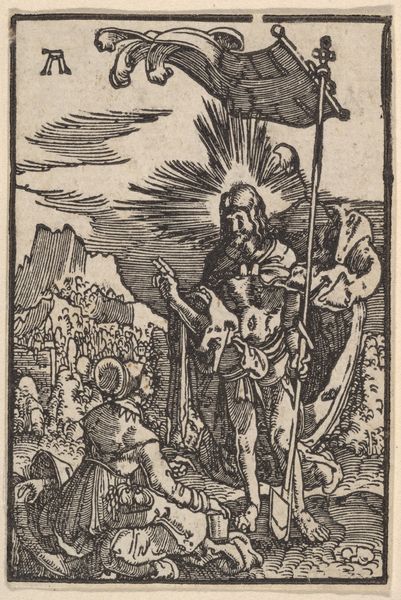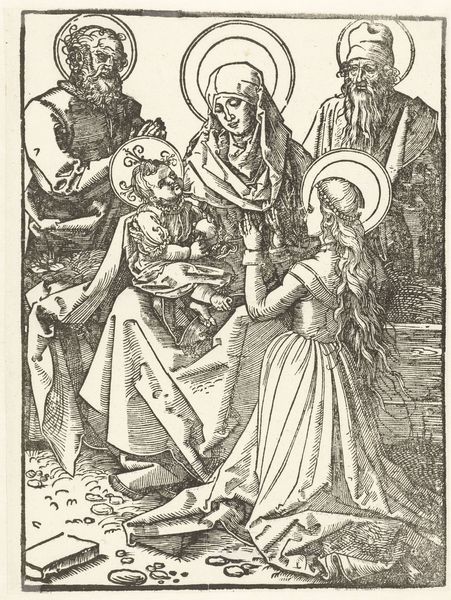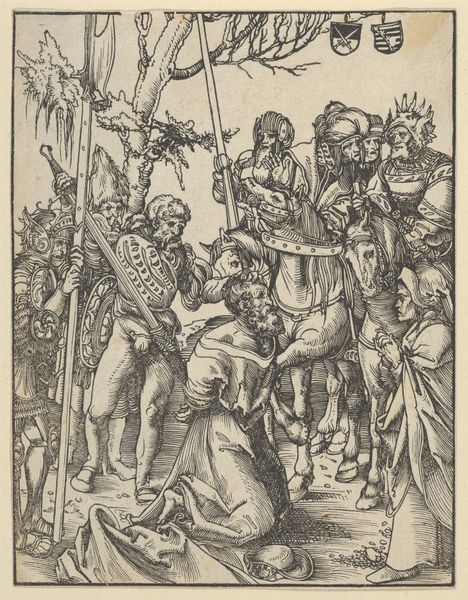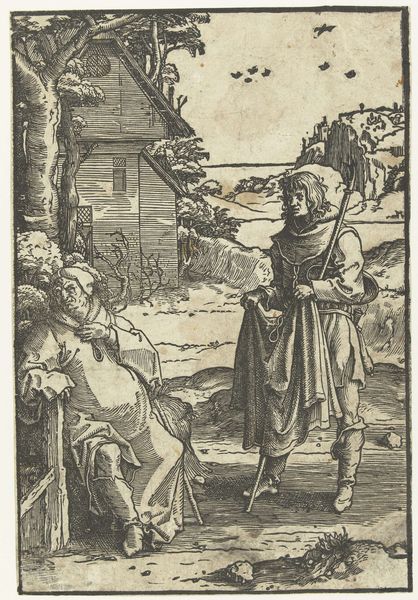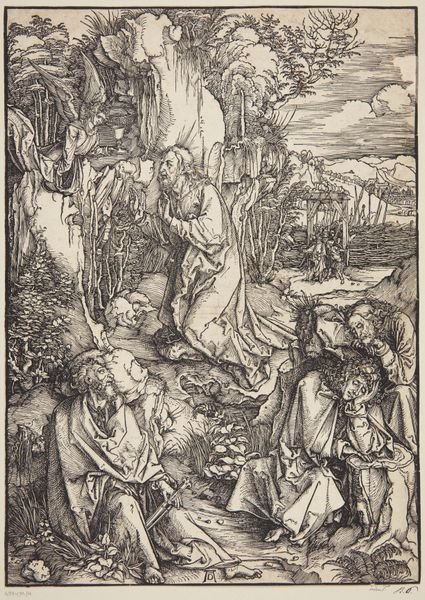
Christ Taking Leave of His Mother, from The Fall and Redemption of Man 1513
0:00
0:00
drawing, print, paper, engraving
#
drawing
#
narrative-art
# print
#
figuration
#
paper
#
northern-renaissance
#
engraving
Dimensions: 171 × 148 mm (image/plate); 174 × 149 mm (sheet)
Copyright: Public Domain
Editor: This is Albrecht Altdorfer’s "Christ Taking Leave of His Mother, from The Fall and Redemption of Man," created around 1513. It's an engraving on paper. The detail is incredible for such a small print. What do you see in this piece, beyond the obvious narrative? Curator: Beyond the surface, I see a profound exploration of familial bonds set against a backdrop of religious and societal expectations. Altdorfer presents Mary not just as a mother, but as a figure embodying the anxieties and constraints placed upon women in 16th-century Europe. The detail is in the service of communicating both internal emotion and wider societal structures. How does that reading sit with you? Editor: I hadn't thought about the societal aspect so explicitly. I was focused on the immediate emotional exchange. Curator: And that's valid. But consider the gaze of the other figures; they act as a Greek chorus, their presence amplifying Mary's vulnerability. What does it mean to depict this moment, not as a triumphant sacrifice, but as a deeply personal and painful separation viewed by her community? This piece almost invites us to question the glorification of suffering, particularly for women. Editor: So you are suggesting that Altdorfer critiques the expectation of women to accept suffering silently within the patriarchal structure of the time? Curator: Precisely. The raw emotion captured, especially in Mary’s posture, humanizes her beyond the saintly icon, transforming her into a woman grappling with an impossible sacrifice. This work opens up a space for dialogue regarding faith, gender, and power, and asks the viewer to confront their own assumptions. Editor: I am now looking at this work through a completely new lens. Curator: The true power of art lies in its ability to be re-contextualized and re-understood across time. The combination of personal emotion and cultural context here truly elevates this print.
Comments
No comments
Be the first to comment and join the conversation on the ultimate creative platform.
